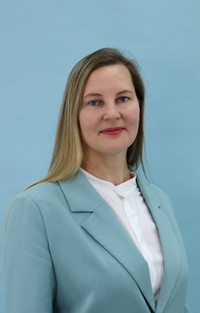Архив журнала
О профиле сформированности языковых умений у детей с умственной отсталостью легкой, умеренной и тяжелой степени
- 825
- Рубрика: МЕЖДУНАРОДНЫЙ ОПЫТ
- Файл статьи: PDF
Аннотация: Люди с умственной отсталостью (в данной работе используется определение умственной отсталости и степеней ее проявления, приведенное в пятом издании книги «Diagnostic and Statistical Manual of Mental Disorders» [4, p. 33]) составляют значительную часть населения планеты. Несмотря на то что функциональные особенности таких людей интересуют представителей разных наук, вопросы, связанные с коммуникацией и ее нарушениями у людей с умственной отсталостью, представляют интерес для специального изучения. В данной работе делается попытка определить профиль сформированности языковых умений у детей с умственной отсталостью легкой, умеренной и тяжелой степени. Изучены образцы самостоятельных высказываний у 240 детей с умственной отсталостью, проведено их сравнение с речью 156 учеников обычных школ и дошкольных учреждений. В процессе исследования применялись специальные приемы, направленные на стимулирование и изучение диалогических высказываний, описаний и повествований, поскольку они наиболее значимы для развития коммуникативных умений и повседневного социального общения. Общая продолжительность записи примеров речи детей указанной категории составила 65 часов. В результате анализа собранного материала было выявлено, что дети с умственной отсталостью использовали в своих ответах 38 283 слова и 13 250 предложений, в то время как ответы детей контрольной группы содержали 31 709 слов и 7179 предложений. Полученные данные позволили определить среднее количество употребленных слов, среднюю длину высказывания, частоту употребления глагольных и неглагольных высказываний, уровень грамматической сложности высказываний тестируемых, а также объем активного словаря. Данные, полученные в группе детей с умственной отсталостью, сравнивались с результатами тестирования нормативно развивающихся детей. Результаты, полученные в группах детей одного ментального возраста, также подвергались сравнению. Проведенный статистический анализ позволил определить, какие различия между сравниваемыми группами были наиболее значимыми.
Ключевые слова: умственная отсталость; умственно отсталые дети; олигофренопедагогика; развитие речи; языковые умения; речевая деятельность; лексемы; нормативное развитие.
Abstract: People with intellectual disability (in this paper, the authors use the definition of intellectual disability and the degrees of its manifestation given in the fifth edition of the book “Diagnostic and Statistical Manual of Mental Disorders” [4, p. 33]) make up a significant portion of the general population. Although their functioning has been a subject of interest for researchers in many fields, the matter of communication and its disorders noted in this group remains an interesting area of study. In this work, an attempt was made to determine a profile of language skills in children with intellectual dis-ability to a mild, moderate or severe degree. Samples of independent speech, collected in a group of 240 children with intellectual disability, were used, along with those of 156 pupils of typical public schools and preschools. In order to provoke the study subjects to make utterances, the eliciting technique was used. In this manner, samples of dialogue speech, as well as description and story-telling were collected, as these three forms of utterance are the most important for the development of communicative skills and for colloquial social communication. Altogether over 65 hours of recordings were obtained. The collected study material was analysed, due to which a total of 38,283 words were noted as well as 13,250 phrases in the speech of children with intellectual disability, while the speech of the control group contained 31,709 words and 7179 expressions. On the basis of the gathered data, it was possible to determine the number and average use of words, the average length of utterance built by the child, the occurrence of verbal and non-verbal utterances, degree of grammatical complexity of the study subjects’ speech, as well as the range of active vocabulary. Data obtained in the study group with intellectual disability were compared with the results of children of typical development. The results of groups with a similar mental age were set against each other. The conducted statistical analysis allowed one to determine which of the differences existing between the compared groups was of particular significance.
Key words: intellectual disability; children with intellectual disability; oligophrenopedagogy; speech develop-ment; linguistic skills; speech activity; lexemes; typical development.


